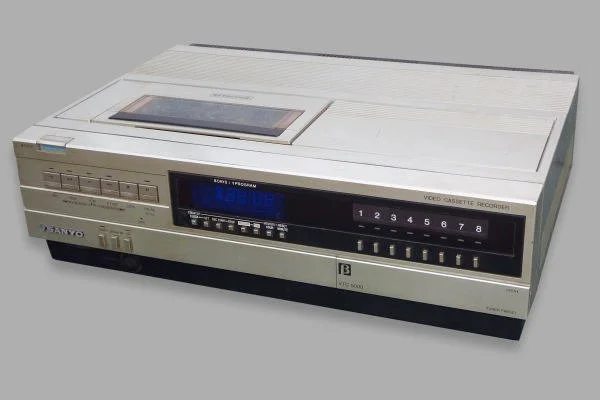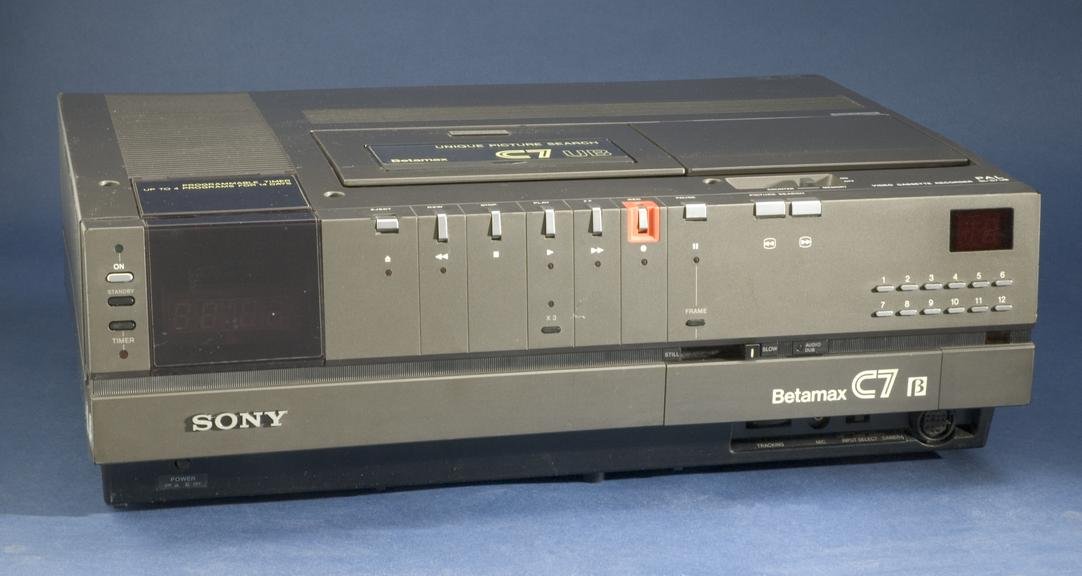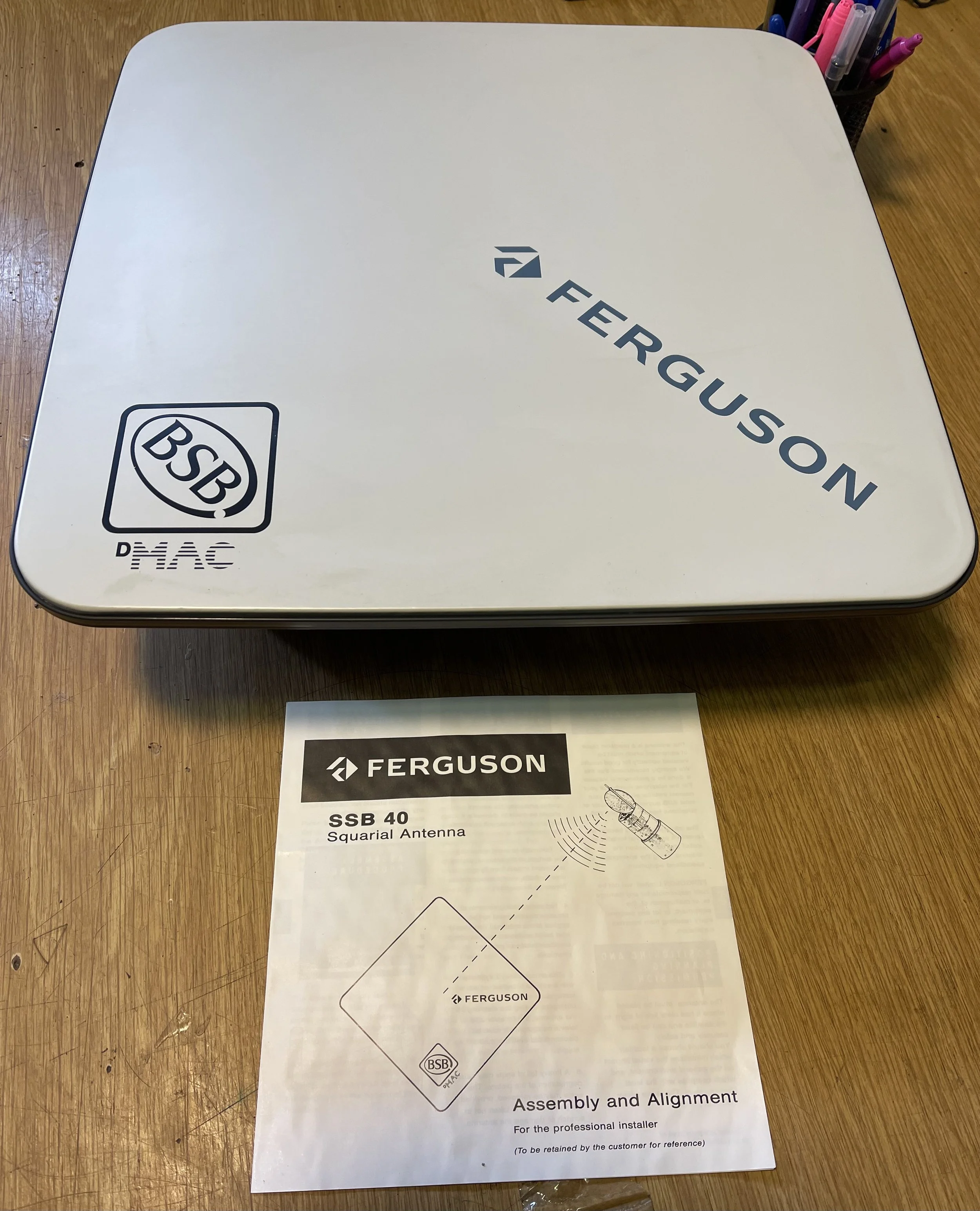 Image 1 of 3
Image 1 of 3

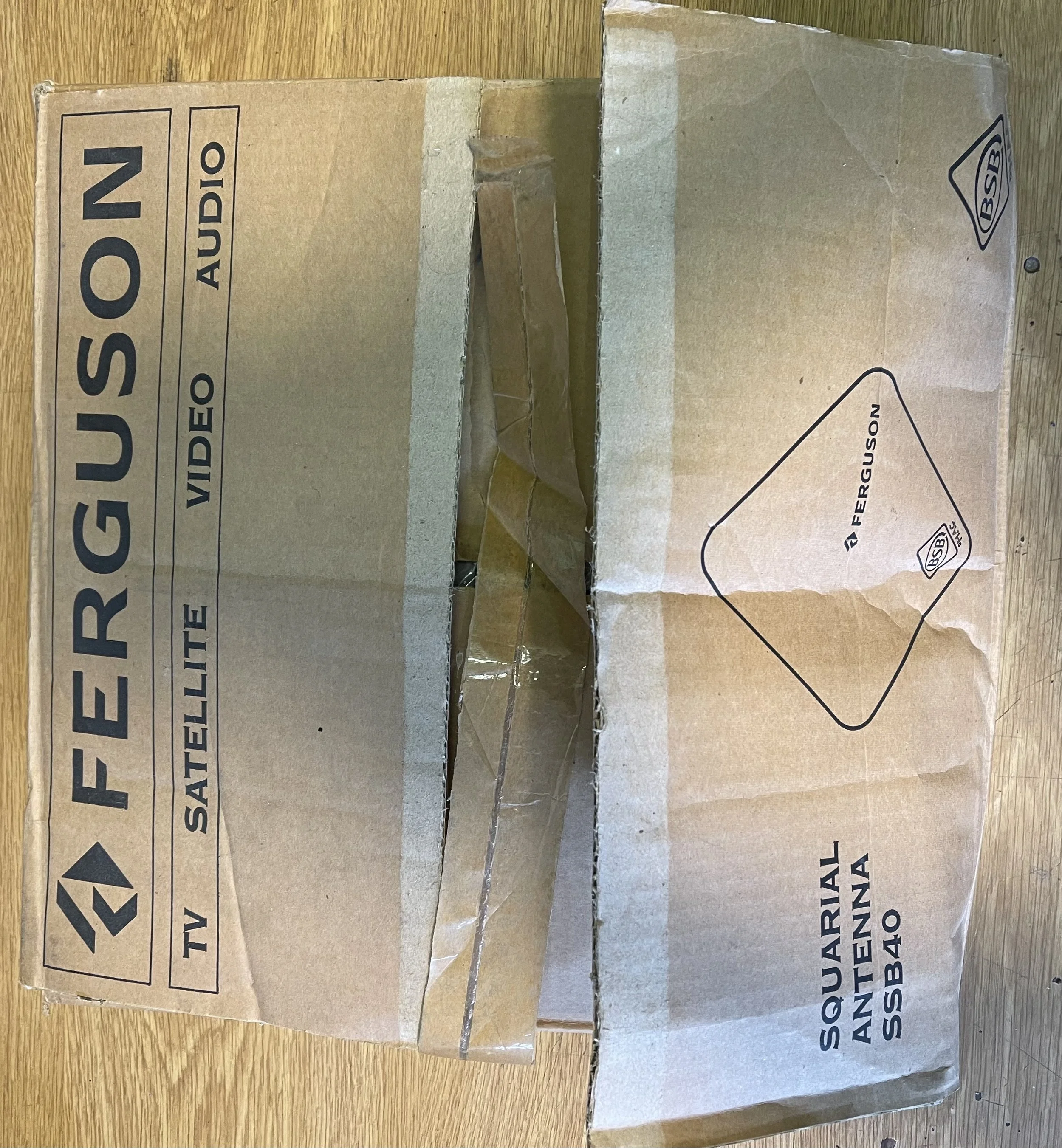 Image 2 of 3
Image 2 of 3

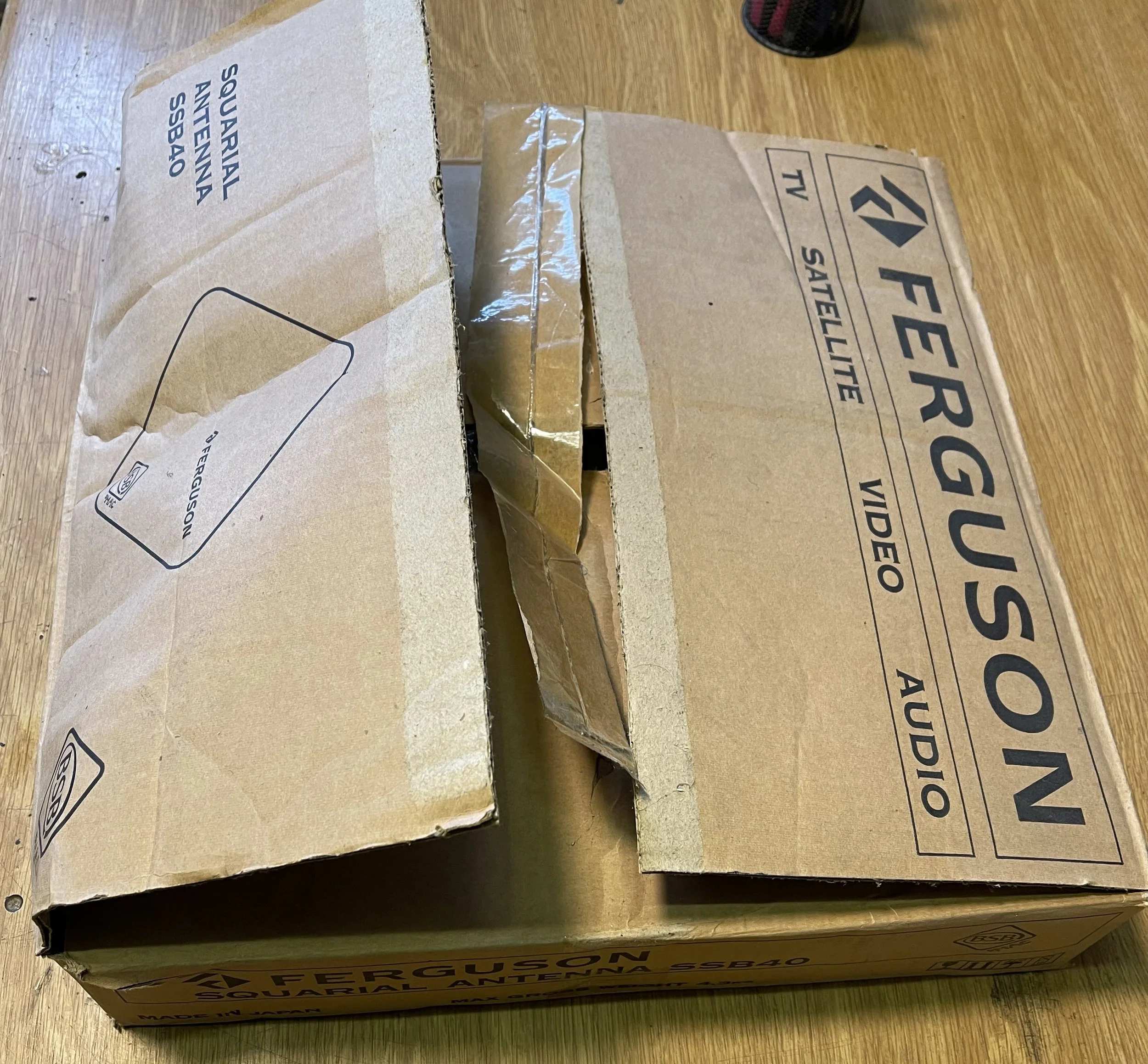 Image 3 of 3
Image 3 of 3




Ferguson Squarial Antenna - SSB40 - BSB TV Satellite dish!
A piece of history here. This “squarial” has never been fitted, and comes with its original box, and instructions.
**
BSB or British Satellite Broadcasting was the rival to Sky TV in 1990. It launched, and boasted “5 channel TV - it’s smart to be square!”
.
To distance itself from Sky and its dish antennas, BSB announced a new type of flat-plate satellite antenna called a "squarial" ( "square aerial"). BSB was hoping to launch in September 1989 but eventually had to admit that the launch would be delayed. BSB continued to invest heavily in marketing in 1989 to minimize the effects of Sky's timing advantage. BSB also received a needed boost in June 1989 when it won the franchises for the two remaining British high-powered DBS channels, beating six other bidders when the BBC dropped all plans for use of its allocated channels. BSB revised its line-up to include separate channels for films, sports, pop music, general entertainment and current affairs. Unfortunately, this increased the size of the dishes which the public had to purchase from 25 to 35–40 centimetres; subsidies from BSB helped maintain retail prices at £250.
.
The launch, six months late, came 13 months after Sky's launch. BSB was due to start broadcasting in September 1989 but was delayed by problems with the supply of receiving equipment and because BSB wanted to avoid Sky's experience of launching when most shops had no equipment to sell.
BSB claimed to have around 750,000 subscriptions while Sky had extended its reach into more than 1.5 million homes. It was believed both companies could break even if subscriptions reached three million households, with most analysts expecting this to be reached in 1992.
Sky's head start over BSB proved that the PAL system would give adequate picture quality, and that many viewers would be happy to watch Sky's more populist output as opposed to waiting for the promised quality programming pledged by BSB. Sky had launched its multichannel service from studios at an industrial estate in Isleworth, with a 10-year lease on SES transponders for an estimated £50 million without backup. BSB on the other hand, would operate from more expensive headquarters at Marco Polo House in Battersea, with construction and launch of its own satellites costing an estimated £200 million as the second of which was a backup.
When BSB finally went on air in March 1990 (13 months after Sky), the company's technical problems were resolved and its programming was critically acclaimed. However, its D-MAC receivers were more expensive than Sky's PAL equivalents and incompatible with them. Many potential customers compared the competition between the rival satellite companies to the format war between VHS and Betamax recorders, and chose to wait and see which company would win outright in order to avoid buying potentially obsolete equipment. Both BSB and Sky had begun to struggle with the burden of huge losses, rapidly increasing debts and ongoing startup costs. On 2 November 1990, a 50:50 merger was announced to form a single company called British Sky Broadcasting (marketed as "Sky").
A piece of history here. This “squarial” has never been fitted, and comes with its original box, and instructions.
**
BSB or British Satellite Broadcasting was the rival to Sky TV in 1990. It launched, and boasted “5 channel TV - it’s smart to be square!”
.
To distance itself from Sky and its dish antennas, BSB announced a new type of flat-plate satellite antenna called a "squarial" ( "square aerial"). BSB was hoping to launch in September 1989 but eventually had to admit that the launch would be delayed. BSB continued to invest heavily in marketing in 1989 to minimize the effects of Sky's timing advantage. BSB also received a needed boost in June 1989 when it won the franchises for the two remaining British high-powered DBS channels, beating six other bidders when the BBC dropped all plans for use of its allocated channels. BSB revised its line-up to include separate channels for films, sports, pop music, general entertainment and current affairs. Unfortunately, this increased the size of the dishes which the public had to purchase from 25 to 35–40 centimetres; subsidies from BSB helped maintain retail prices at £250.
.
The launch, six months late, came 13 months after Sky's launch. BSB was due to start broadcasting in September 1989 but was delayed by problems with the supply of receiving equipment and because BSB wanted to avoid Sky's experience of launching when most shops had no equipment to sell.
BSB claimed to have around 750,000 subscriptions while Sky had extended its reach into more than 1.5 million homes. It was believed both companies could break even if subscriptions reached three million households, with most analysts expecting this to be reached in 1992.
Sky's head start over BSB proved that the PAL system would give adequate picture quality, and that many viewers would be happy to watch Sky's more populist output as opposed to waiting for the promised quality programming pledged by BSB. Sky had launched its multichannel service from studios at an industrial estate in Isleworth, with a 10-year lease on SES transponders for an estimated £50 million without backup. BSB on the other hand, would operate from more expensive headquarters at Marco Polo House in Battersea, with construction and launch of its own satellites costing an estimated £200 million as the second of which was a backup.
When BSB finally went on air in March 1990 (13 months after Sky), the company's technical problems were resolved and its programming was critically acclaimed. However, its D-MAC receivers were more expensive than Sky's PAL equivalents and incompatible with them. Many potential customers compared the competition between the rival satellite companies to the format war between VHS and Betamax recorders, and chose to wait and see which company would win outright in order to avoid buying potentially obsolete equipment. Both BSB and Sky had begun to struggle with the burden of huge losses, rapidly increasing debts and ongoing startup costs. On 2 November 1990, a 50:50 merger was announced to form a single company called British Sky Broadcasting (marketed as "Sky").


